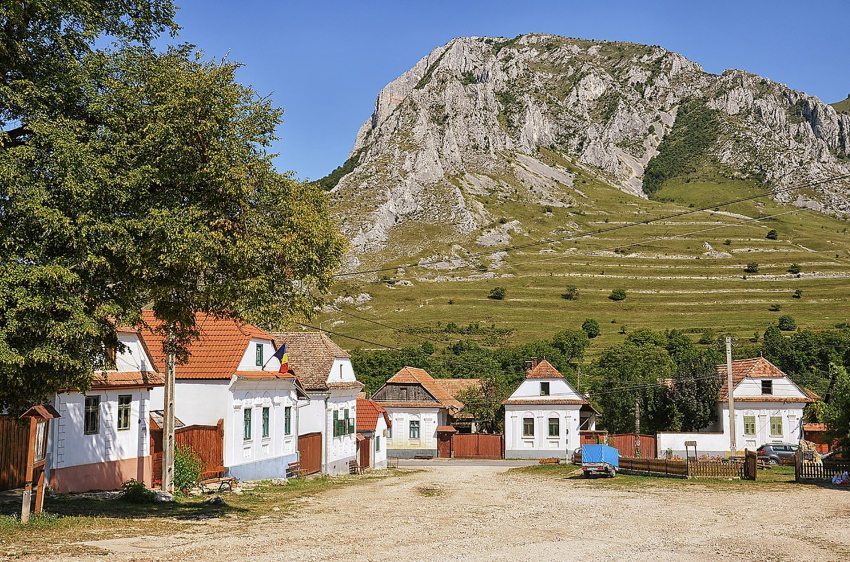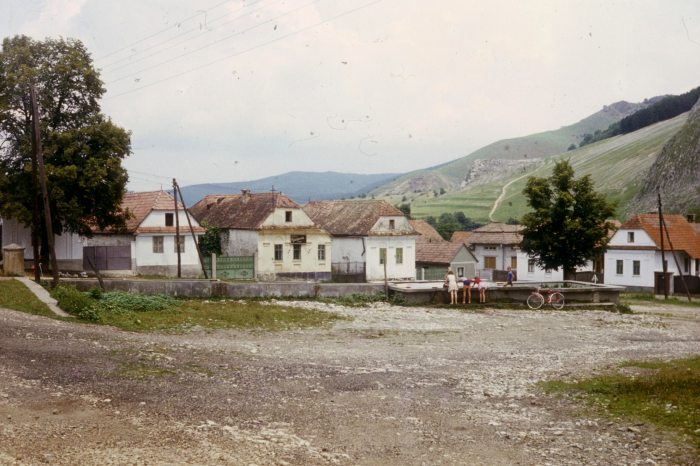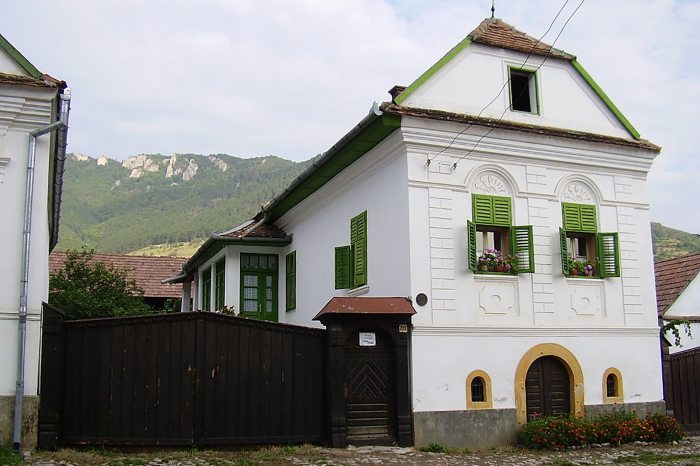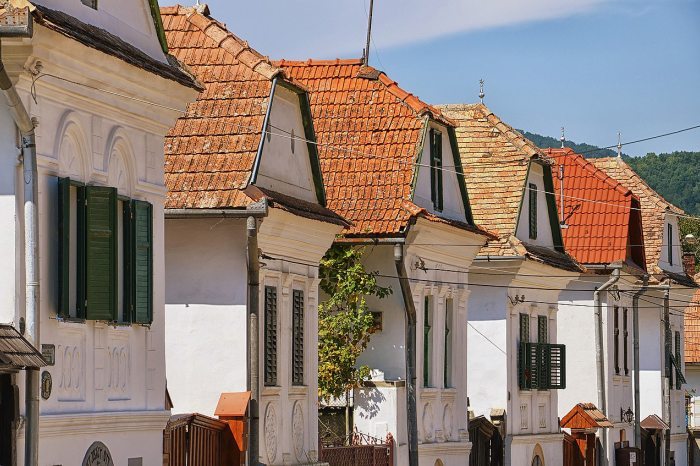A village saved from decay – Torockó
The feeling of being late in my generation has already been described in many different ways. For us, for example, the kind of Transylvanianism that characterized intellectuals in Hungary around the time of the fall of communism is not a basic experience. I have heard many stories of long hitchhikes, of sleeping in straw huts, and of the joy of the one-time wanderer being welcomed in the pastor's house of a Transylvanian village and talking about the things of the world until dawn. It's not hard to imagine the fascinating impact of a remote village in a special natural setting like Torockó (Rimetea), which was the first in Transylvania to be designated a Hungaricum because of its built heritage.

Torockó, about twenty-five kilometres from both Nagyenyed (Aiud) and Torda (Turda), nestled in the hills, is the westernmost Szekler settlement. The market square of the village of nearly 600 people is a unique collection of uniform, neoclassical-style houses in front of the equally interesting rarity, the ‘vajor’ (i.e. a multifunctional pool. Spring water flows in at the top, which is drinking water, animals drink from the long trough at the next part, and locals used to wash in the widening pool at the end), which channels the waters of the Tilalmas spring into the village at the foot of the terraced, majestic, mythical mountain of Székelykő. That's pretty much all that tourists arriving by bus know about Torockó, spending half an hour, or one night, at best, in the valley to fill their lungs with real fresh Hungarian air before heading on to Szeklerland or the Hungarian border. Of course, a lot can happen in a single night.
The novelist Mór Jókai only enjoyed the hospitality of the locals for one night, yet he chose Torockó as the setting for his famous novel ‘Egy az Isten’ (God is One).
An actual pilgrimage destination
The title of the novel is the creed of the only Protestant denomination founded in Hungary. Torockó was – as its inhabitants called it – the Unitarian Mecca: its wealthy ironworkers maintained one of the strongest congregations, and students from more than 200 Transylvanian settlements came to board in their own school. Torockó was a very wealthy settlement thanks to its iron mining and working industry, it had no landlord and its inhabitants were reputed to be very able to work and live. An excellent example of the latter – that is to say, that they liked to do things their own way – is the folk costume of Torockó, which was uniquely ornate and testified to great prosperity. The past tense is a testament to the fact that, although there are still women who make textiles, they can no longer produce complete costumes, and the village has also had a difficult period when it was threatened with destruction. During the communist era, the demand for Torockó's high-quality forged products disappeared, as the nearby Vajdahunyad (Hunedoara) ironworks was churning out iron: in the 1980s, one of Romania's largest metallurgical centres employed more than 20,000 people. Emigration started, and with it went hand in hand ageing population and poverty.
This is how the first tourists who came to the settlement after the change of regime found the traces of a vanishing civilisation instead of finding a strong, self-respecting Hungarian village.
To preserve and make preserve
The fate-turning change was brought about by young Transylvanian heritage conservationists and the large-scale heritage conservation programme they organised in the mid-1990s, which resulted in the historic core of the settlement being awarded the Europa Nostra Prize in 1999 and the Hungaricum in 2015 – the latter title was awarded for the first time in Transylvania. The Transylvania Trust Foundation and Torockó's twin town, the Municipality of the V. District of Budapest, have helped to renovate nearly one hundred and fifty porticos in the course of twenty-five years of historic preservation work.
It was not only the buildings that needed care but also the souls of the people who lived there – they needed the support to see the potential of conservation rather than demolishing old buildings. In their case, tourism is both an opportunity and a threat. The biggest threat to Torockó and its heritage is not its Rumanian population, for they represent a tiny minority (who have built two monasteries in the town in recent decades), but globalism and tourism, which is attracting increasingly poor quality visitors. And, of course, negative demographic trends: for example, the 30-person home of the St. Francis of Deva Foundation in Torockó is the reason why there is still Hungarian-language education in the village.
Children in Torockó are taught to love and appreciate their roots and their history – if they preserve them, they will experience that their past will sustain them in the present.
Playfully disciplined facades
The market square of Torockó is lined with uniform whitewashed neoclassical buildings with Saxon elements, most of them built after the 1870 fire. In the past, the typical Torockó house was a pine-log house, plastered up to the window, such a house was displayed in the Ethnographic Village of the 1896 Millennium Exhibition, between the houses from the Palóc and the Kalotaszeg regions. Most of the wooden buildings have now been demolished. The iconic stone houses that can be seen today are unique in that, in addition to the neoclassical ornamentation of the town's Unitarian fortress church, they also feature unique motifs on their façades, both as a testimony to the importance of belonging to the community and as a way of embracing their individual characteristics.
This playfulness mixed with discipline is a totally unique style – especially as the red roofs, white walls and green windows of the houses stand as a national creed to the tourists.
The beautiful old houses are inhabited by self-respecting Hungarian people, who are both warm and reserved hosts. If you're curious about the present-day inhabitants of the village but don't have the means to go on a trip, Máté Tamáska's 2015 book “Torockó felfedezései – A műemléki tér szociológiája” ("Discoveries of Torockó – The Sociology of the Historic Space"), which also describes what good conservation work looks like, is a good armchair guide. In short, preserving the past in a way that fits the challenges and processes of the present and becomes an inner need and a specific norm for those living in it, helping us to understand and appreciate the solutions of earlier eras.
Unconventional ways of survival
One of the most interesting aspects of the Torockó miracle is that the conservation works did not help the wealthiest, but rather those residents who would have had little means to carry out the necessary work. It must have taken great courage and insight to accept this in a culture where poverty was not seen as a consequence of changed external circumstances but was often attributed to laziness and lack of hard work. However, the preservation and maintenance of a cohesive settlement image were clearly in the interest of the whole community. The lesson is that there is no shame in accepting help. In fact, in the long term, this conservation-restoration renewal can be a great resource not only for individuals but also for the community, for example, in staying in the homeland.
So-called "guest worker villas", which are an invasive species that settle on the landscape from Romania to Turkey, are not built in this region. New, temporary structures are of course also appearing in Torockó: notably the tent camp of a recurring summer festival, Double Rise. The title of this all-round artistic event, which attracts thousands of visitors, refers to one of Torockó's natural wonders: the Székelykő mountain, which stretches north-south, makes the village have a double sunrise.
Once at dawn, and a second time when it emerges in all its glory from behind the huge rocky outcrop at around 11am, to the delight of late risers.
Who knows: perhaps, in a symbolic way, a new day is dawning for the Transylvanian settlement.










